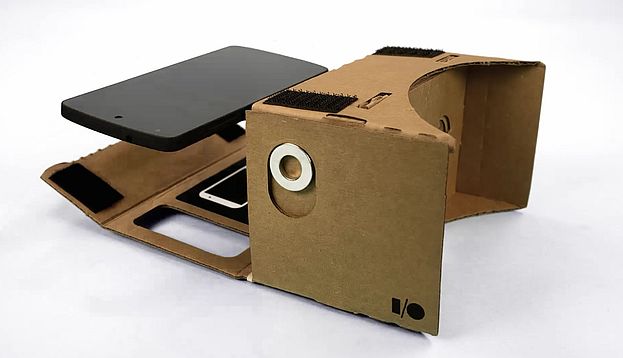Yesterday’s Google I/O conference brought a number of announcements to light, as you can see from our adjacent story recapping the event. However, one of the bigger announcements could mean a brighter future for the company’s affordable virtual reality project, the Cardboard.
A number of improvements are being made to the company’s virtual reality platform, which utilizes an Android device coupled with a unit made out of cardboard. In addition to small changes that make it more convenient, the company has also vowed the ability to create YouTube-operated virtual reality videos, with a possible introduction in July, according to USA Today.
One big change is that the platform is no longer Android exclusive, as owners of iOS devices can now try it out. In addition, a new program called Expeditions will bring education into the fold, enabling teachers to take kids around the world through virtual recreations of locations. The teacher can lead a classroom full of kids through a VR experience, if all of them have a suitable smartphone and a Cardboard unit. This could make for much more frequent and interesting “field trips” — the Magic Schoolbus, indeed.
With these changes, Google hopes to remain competitive with the other VR-related tech headed to market next year, including the Oculus Rift and Sony’s Project Morpheus. It certainly has the price advantage, as the current model of Cardboard sells for a very affordable $20.
To help make VR-based videos more accessible, Google has teamed up with GoPro, creators of mobile cameras that are used by a number of extreme sports athletes (among others), to create a new platform that enables the capture of videos for VR. Using a 360-degree camera array, users can capture action in a full environment, then post said videos through a program called Jump, which will be supported through YouTube. Users can then pick and choose which experiences they want to check out.
Although the multi-camera system won’t come cheap – it’s expected to run around $8,000 at launch, using 16 specialized cameras made by GoPro – it will no doubt open the door to companies and clients that want to show a virtual experience made on their own terms. And that’s something that should be of interest to potential VR fans that want to give Cardboard a shot.
“Soon, I hope we’ll all be able to jump between the 1,000 most beautiful places on Earth with Cardboard,” said product vice president and project lead Clay Bavor. “We’re going to enable anyone who’s motivated to capture events and places anywhere in virtual reality. We’re leveling the playing field.”
Cardboard has proven to be a pretty modest hit, with over one million devices sold since last year, and a large number of apps downloaded through Android devices. No doubt these changes – and the introduction to iOS accessibility – will pick up those numbers.
Expeditions will also play a huge part, allowing students to visit exotic locations from the convenience of the classroom – and giving teachers a new platform to work from. “Who doesn’t like field trips ” said Bavor. “This is all about teachers having a new tool at their disposal. Some of the (test) classrooms have gone to Verona while reading Romeo and Juliet, or visited the Great Wall of China to learn more about the math that went into its construction.”
More details about Jump, Expeditions and more can be found here.

